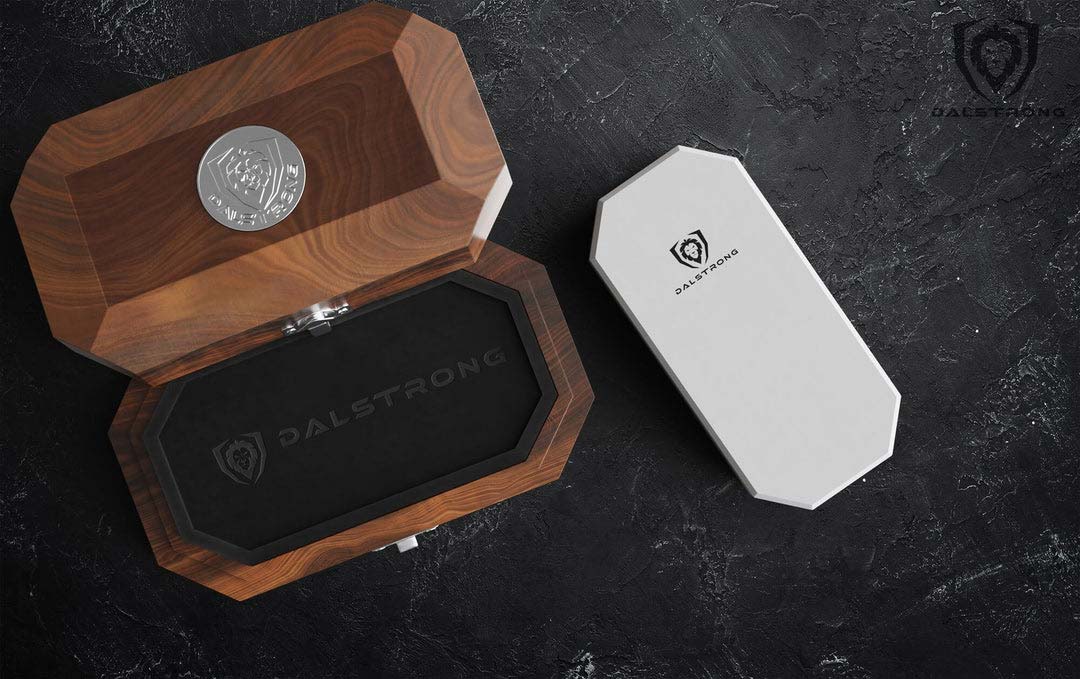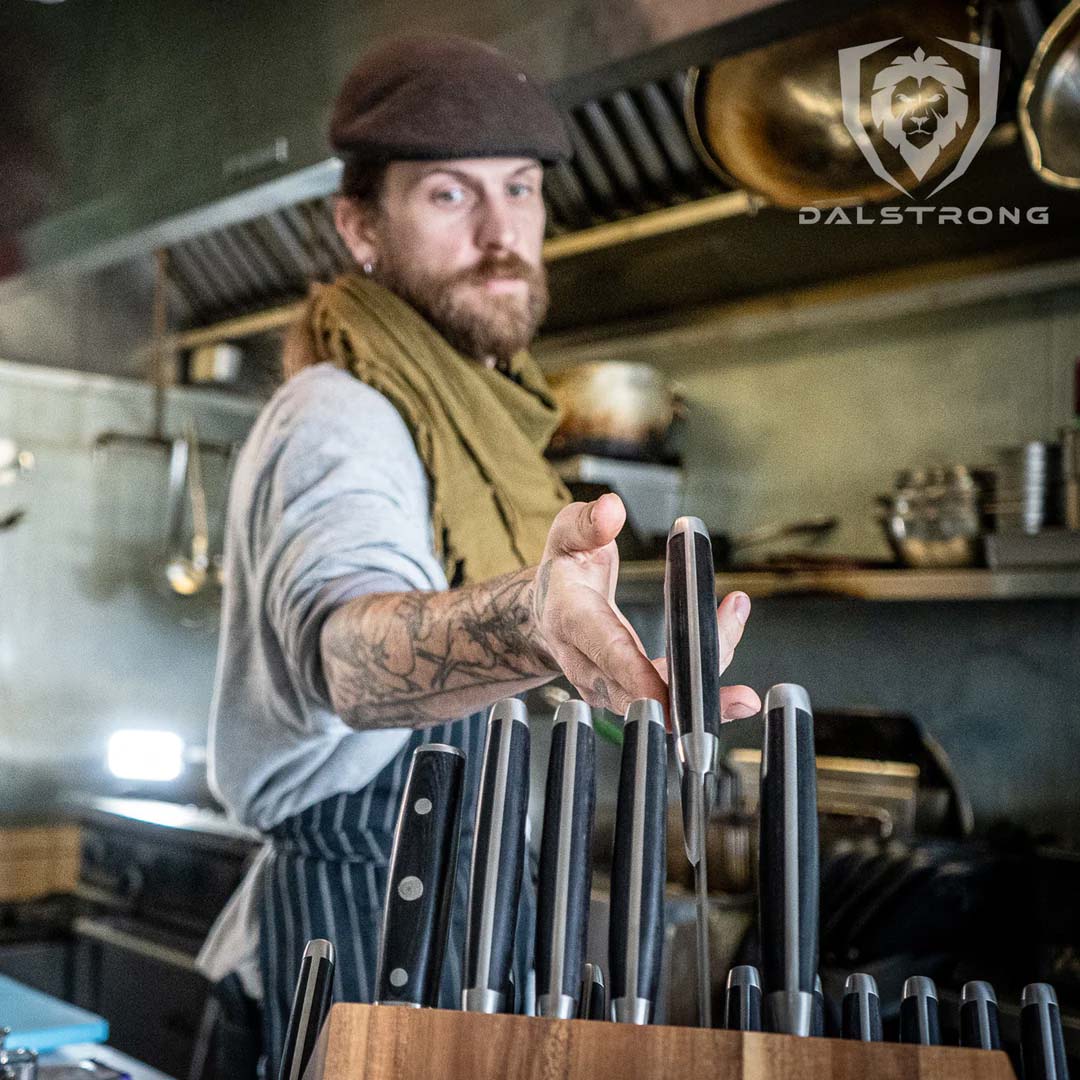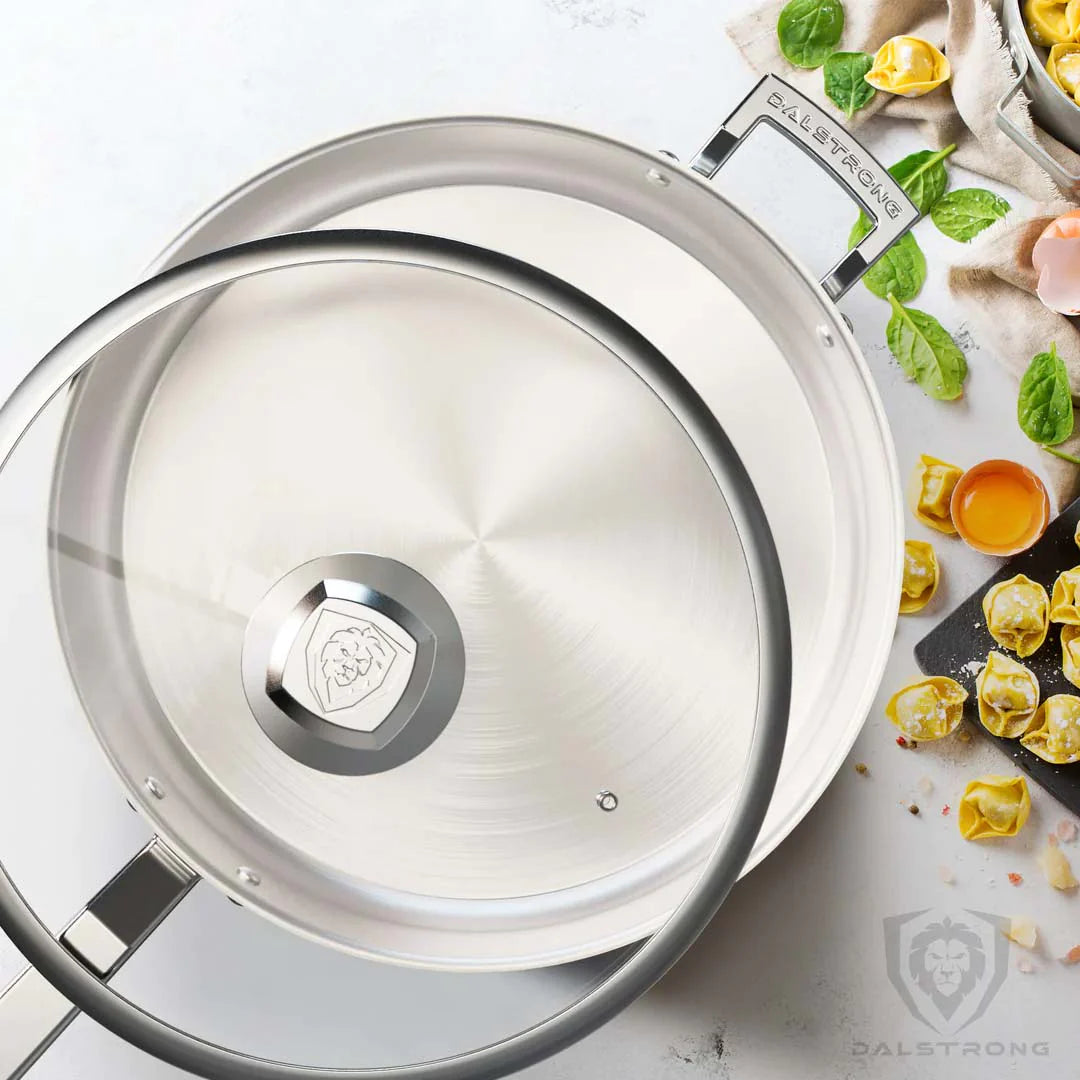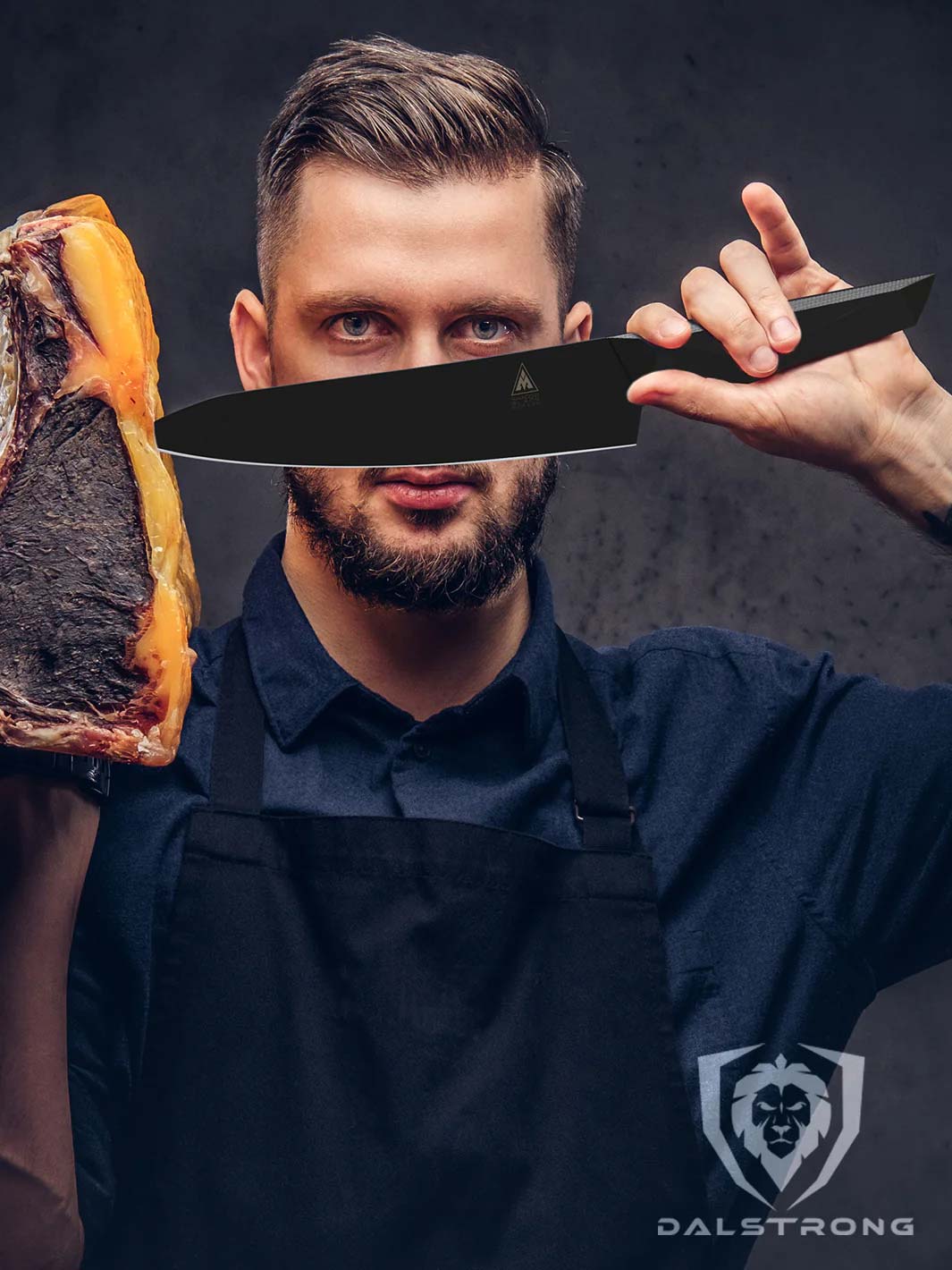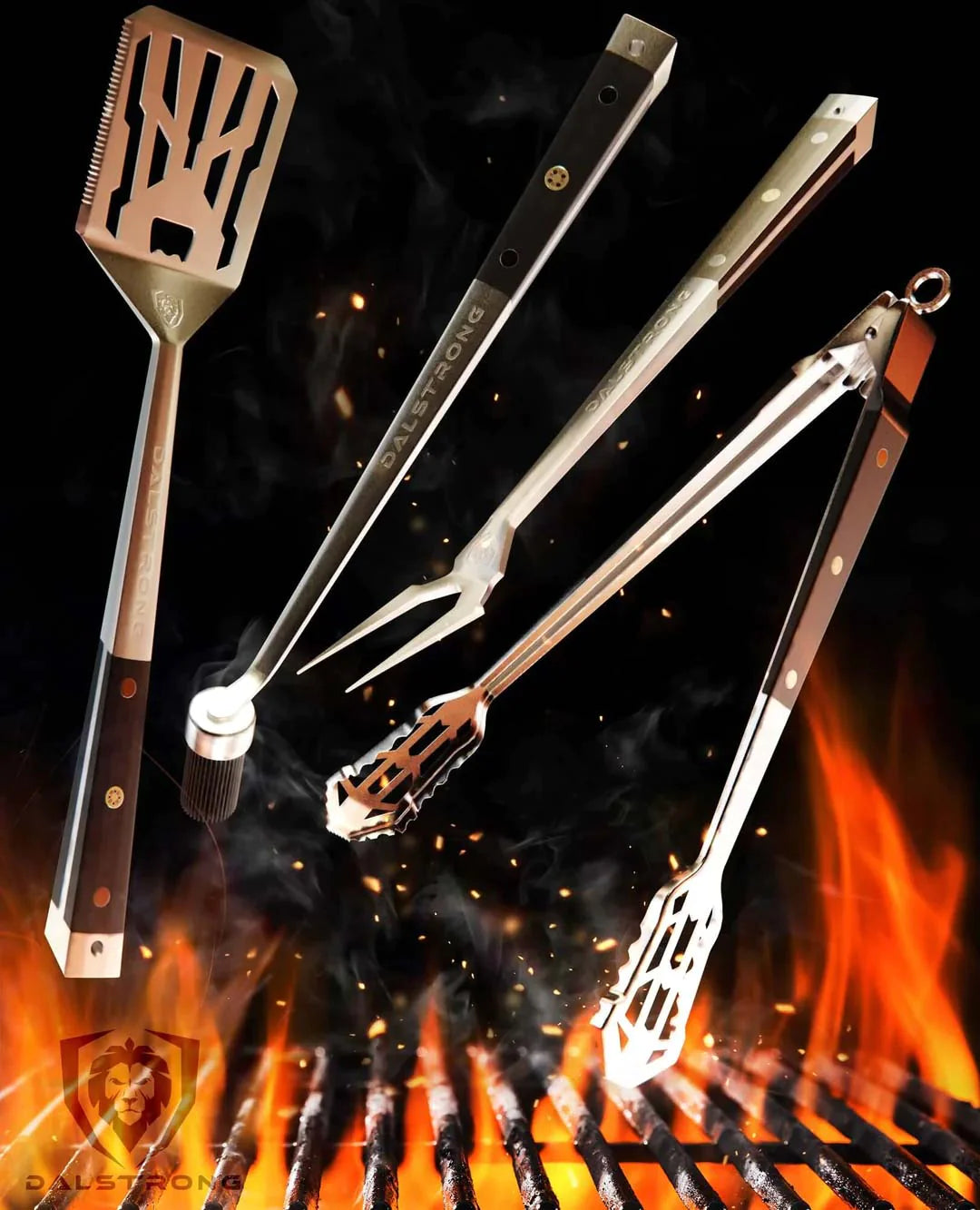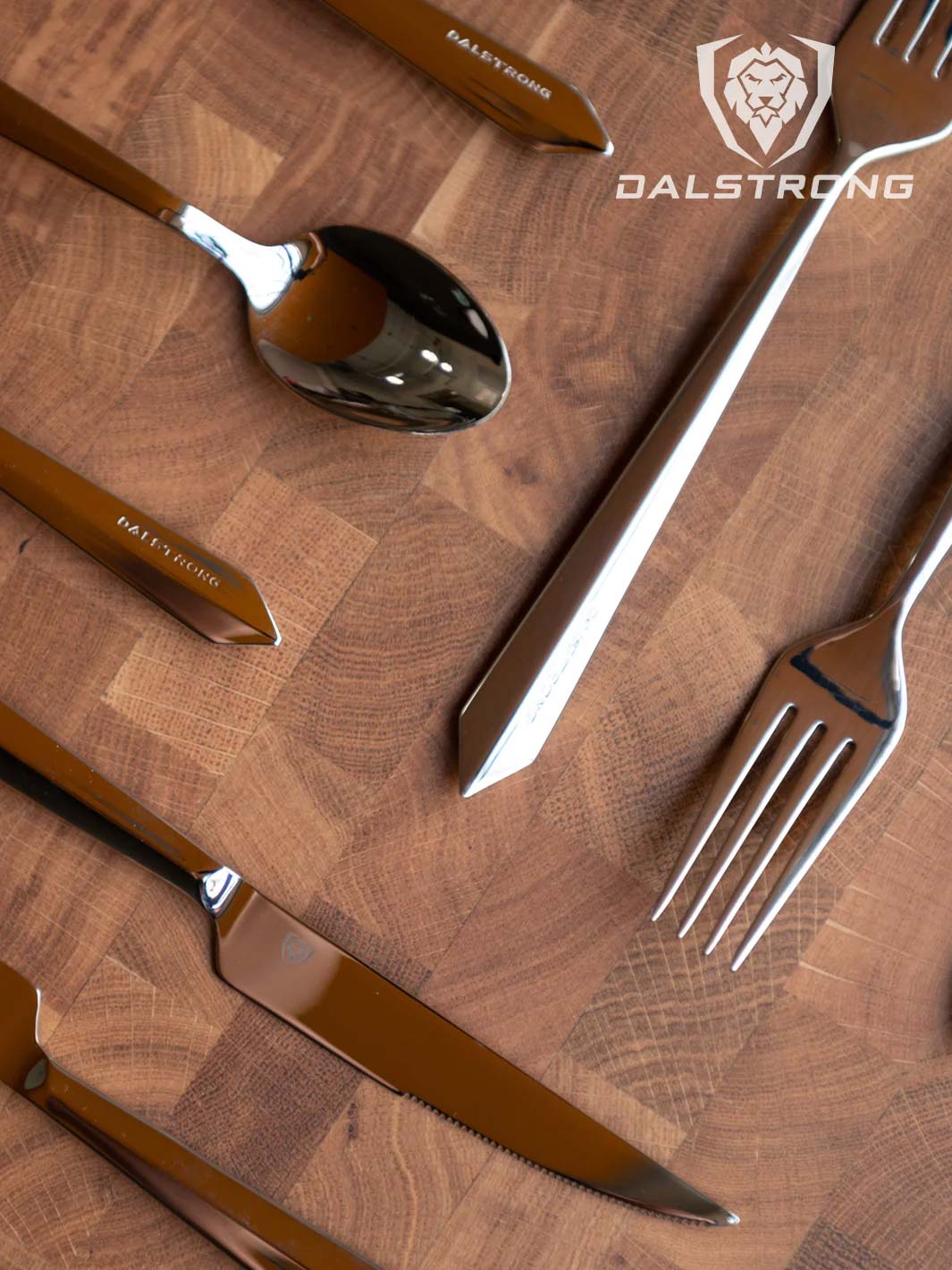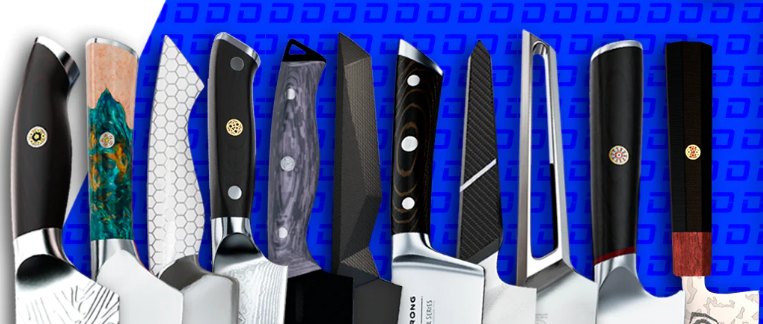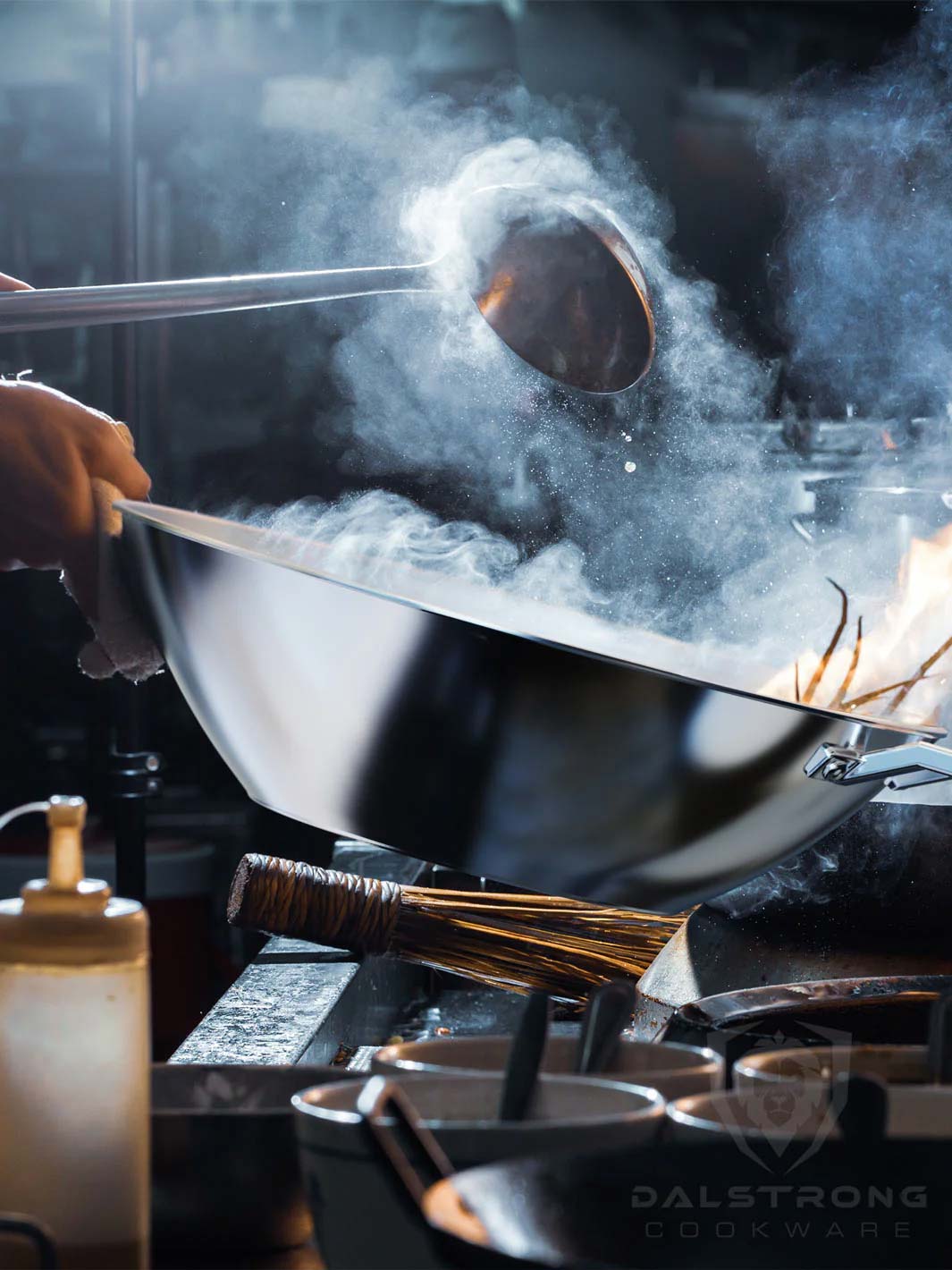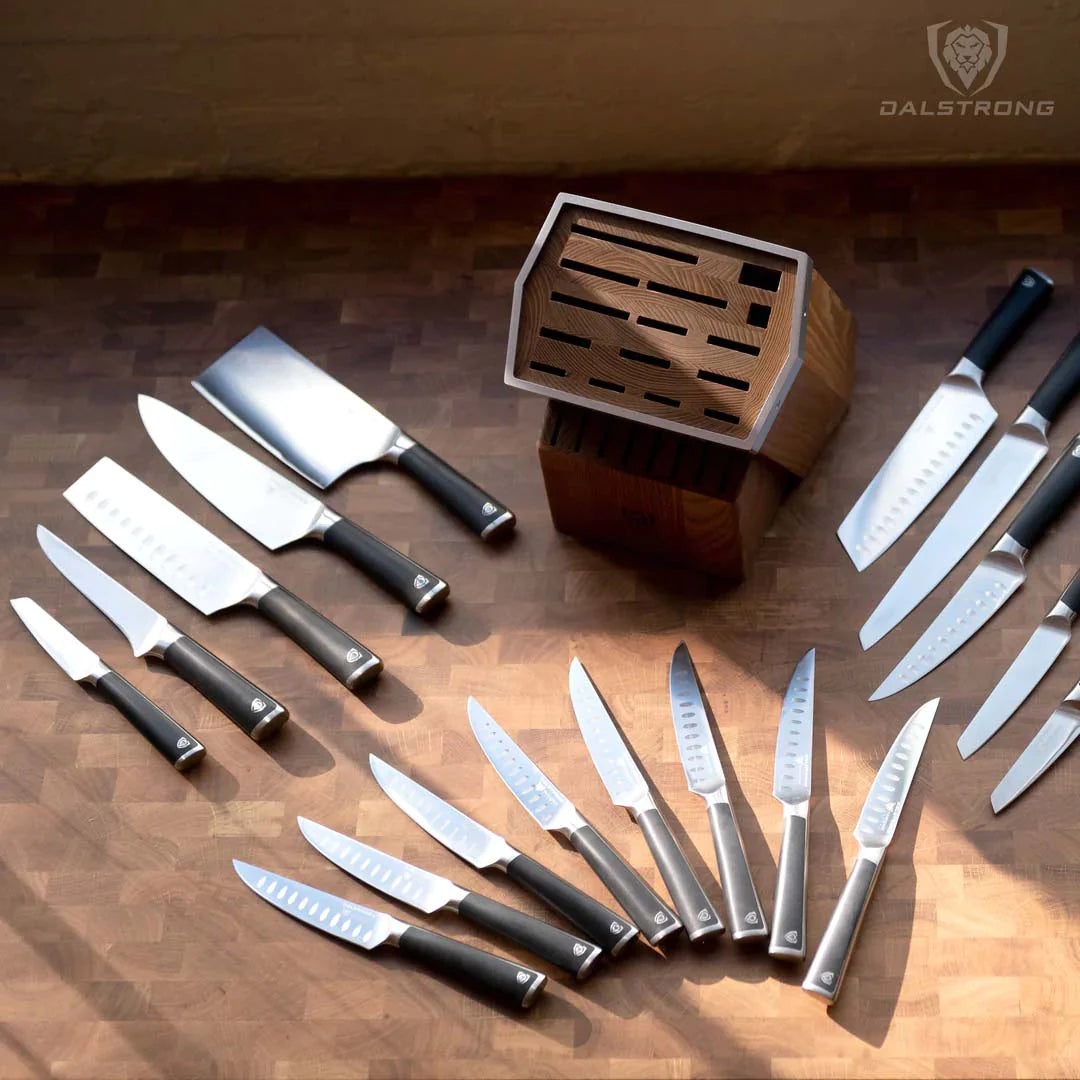Best Whetstones
Best Whetstones
- Dalstrong Portable Whetstone Kit - #1000/#6000 Grit Combo - with Oak Storage Box
- Dalstrong #400/#1000 Grit Premium Whetstone Set
- Dalstrong #3000/#8000 Grit Premium Whetstone Set
- Dalstrong Premium Whetstone Kit (#1000/#6000 Grit)
It is public knowledge that knives are an essential part of the culinary process. With the help of a sharp knife, you greatly reduce the time of the prepping process, turning those seemingly scattered ingredients into a full-blown meal in the blink of an eye.
But the truth is, all that chopping, dicing, and slicing eventually take a toll on your knife, reducing the efficiency of its sharp edge with time. No knife, even the best ones, stays sharp forever.
Luckily for you, knife sharpening methods have evolved a great deal over the past 4000 years, so you don’t have to throw away that dull knife that’s been sitting in your kitchen for ages anymore. There is hope, after all.
Enter: the whetstone.
Also known as water stone or sharpening stone, it is one of the most ancient knife sharpeners known to man. Owning one of these babies will allow you to bring your blade’s dull edge back to life in just a few sharpening sessions. And while the learning curve might be a little steeper than other sharpening methods, learning how to properly use a whetstone will give you more control over the sharpening process and the necessary credentials to become a true knife aficionado.
Check out a comprehensive guide to the best knife sharpeners here.
So without further ado, we’ll make our way down this whetstone rabbit hole, one step at a time.
1. What Is a Whetstone?
Portable Whetstone Kit #1000 / #6000 Grit Combo with Oak Storage Box
Commonly regarded by knife connoisseurs as the single most efficient knife sharpening tool out there, the whetstone has been around since the Roman times. Even though it’s commonly believed that the whetstone gets its name from the water involved in the sharpening process, it actually comes from the old English verb “to whet,” which means to sharpen and object.
In the old days, a natural whetstone was pretty much the only choice but nowadays there are also synthetic ones that can work just as well, if not better.
Natural Whetstones
Natural whetstones come in a wide assortment of materials but the most famous ones are without a doubt the Arkansas novaculite, the Belgian coticule, and Japanese whetstones, known for their fine grain silicate and clay composite, which is generally softer and more gentle on knives than other whetstones. While highly sought-after, they are not as consistent as synthetic ones, meaning the grit (the degree of coarseness) might not be the same throughout the entire stone.
Artificial Whetstones
Artificial whetstones are usually made from bonded abrasives, either aluminium oxide, silicon carbide (basically a ceramic stone), or a diamond coating on top of a metal sheet. The standard format is a double-sided stone with a fine grit on one side and a coarse grit on the other.
Diamond Sharpening Stones
Diamond sharpening stones are also an option. A diamond stone’s surface is covered with diamond powder, making it highly abrasive. Handle with care, though, since these can reshape the edge of your knife in just a few minutes.
Oil Stone
Another sharpener available is the oil stone which, as its name indicates, uses oil as a lubricant. This type of stone is generally more durable but it takes longer to sharpen a knife and is also harder to clean. Whether your stone can be used with water or oil will depend on the material, so please read the manufacturer’s instructions first.
Coarse Stone
A coarse stone (grit grade <1000) is perfect for repairing severely damaged blades but should never be used for general sharpening due to its extreme abrasiveness.
Grit Stone
Then comes the medium grit stone (1000-3000), which has the right amount of coarseness to give your knife’s blade a razor-sharp edge.
Finally, a grit grade of 4000-8000 is recommended for polishing and finishing.
Note: Mind you, whetstones are sharpening tools. If what you’re looking for is to maintain the edge of your knife, then what you need is honing, not sharpening. Check out our collection of honing rods here. Want to learn more about sharpening steels? Take a gander at our Best Honing Steel article.
One of the most versatile sharpening tools available, the whetstone can not only repair, sharpen, and polish knives but it’s also ideal for other tools such as scissors, razors, and chisels. Once you master the proper technique, you can sharpen all kinds of knives - a kitchen knife, a pocket knife, a hunting knife, you name it. The sky’s the limit.
Bonus tip: Check out our guide on how to sharpen a serrated knife.
2. What Is the Best Whetstone?
1. Dalstrong Portable Whetstone Kit - #1000/#6000 Grit Combo - with Oak Storage Box ($69.99)
Modern-day chefs move around a lot. Whether it’s a pop-up at a restaurant or an impromptu BBQ at a friend’s backyard, today’s chef-on-the-go needs a convenient, portable solution to carry their treasured tools while keeping them protected. The Dalstrong Portable Whetstone Kit offers just that - with two grit sizes, a #1000 to sharpen and a #6000 to polish, plus a fancy oak storage box, this double-sided whetstone is all you’ll ever need to keep your knives sharp as a tack.
Pros:
- Made of premium Corundum for maximum durability.
- Sharpen and polish with the same tool.
- That oak storage box just screams “distinction.”
Cons:
- Learning how to use a whetstone might require a little more dedication than other sharpening methods.
- Vegetarian or vegan chefs might require a stone with a higher grit for finishing.
2. Dalstrong #400/#1000 Grit Premium Whetstone Set ($59.99)
Constructed from top grade corundum (aluminium oxide), the Dalstrong #400/#1000 Grit Premium Whetstone Set is the stuff professional and amateur chefs dream of. Featuring a set of two individual oversized stones, it’s a must-have for anyone interested in keeping their knives’ edges razor-sharp 24/7. With a coarse grit stone of #400, it’ll bring even the dullest knives back from the dead. Once back in the action, the #1000 all-purpose knife sharpening stone will put a mirror polish on your beloved chef’s knife, bringing it back to factory finish.
Pros:
- Perfect for sharpening both Western and Japanese knives
- All-in-one solution for your knife sharpening and polishing needs.
- Thicker stones for maximum durability.
Cons:
- The #400 is excellent for repairing knives but it might be a little too coarse for regular sharpening.
- For a super fine finish, you might want to go a little higher than #1000.
3. Dalstrong #3000/#8000 Grit Premium Whetstone Set ($59.99)
It’s time to face the facts - your valued knife set isn’t performing as well as it used to. Now, before you sink into despair, let me tell you that there is a light at the end of the tunnel.
The Dalstrong #3000/#8000 Grit Premium Whetstone Set can not only bring that blunt edge back to peak performance but also leave it with a mirror polish that will leave you squinting. Perfect for both German and Japanese knives, this whetstone knife sharpener is your one-stop-shop for all your knife sharpening needs.
Pros:
- Expert craftsmanship.
- Premium corundum (aluminum oxide) for long-lasting performance.
- Increased surface area lets you work with a large variety of knives.
Cons:
- While perfect for sharpening, you might want something a little more coarse for repairing severely damaged blades.
- If you use your knife solely for cutting meat, the #8000 grit might be a bit of overkill.
4. Dalstrong Premium Whetstone Kit (#1000/#6000 Grit) ($89.99)
Composed of two individual stones, one for sharpening and one for finishing, the Dalstrong Premium Whetstone Kit (#1000/#6000 Grit) is an excellent method to help your blade regain its sharp edge.
It also features a handcrafted Acacia wood base that serves as a level surface to hold your stones in place during the sharpening process, which also serves as a convenient storage device.
Pros:
- Top-grade corundum ensures optimal performance and durability.
- Ideal not just for knives but also for scissors and other bladed tools.
- Comes with a rust eraser and a nagura stone for quick cosmetic touch-ups.
Cons:
- The price point might be a little high for casual chefs.
- You might need a higher grit for working with vegetables or fruits.
3. How Do I Choose a Whetstone?
Dalstrong #3000/#8000 Grit Premium Whetstone Set
This will largely depend on your needs and level of experience. If you have a knife with damaged chips on its blade, then a grit lower than 1000 is highly recommended.
The 1000-3000 grit is the sweet spot for regular sharpening. For knives that aren’t damaged and just need a quick makeover, #1000 will work just fine. If more sharpening sessions are required, we recommend 2000-3000 since they’re less abrasive. That said, you shouldn’t sharpen your knives on a daily basis - that could end up ruining your knife’s blade beyond repair.
Finally, for a finally refined edge, you can opt for the 4000-5000 range. These sharpening stones bridge the gap between sharpening and finishing. It’s also good to have in mind that the primary purpose of the knife in question is key when choosing a finishing stone - for meat knives, anything between 4000 to 6000 will suffice. On the other hand, a knife used mainly to cut fruits and vegetables can work better with a grit up to 8000.
4. What grit stone is best for sharpening knives?
Dalstrong #400/#1000 Grit Premium Whetstone Set
Basically, it all comes down to how sharp your knife is.
We’re gonna get a bit technical here but I promise it won’t be too bad.
The sharpness of a knife is measured through what is called a Rockwell scale. This scale measures the resistance of an object (a knife’s blade, for example) to penetration and deformation from a different material. The higher the blade on the Rockwell scale (HRC), the finer the grit will have to be.
See? It wasn’t that bad!
Now, let’s get into the details:
- For steel blades with low hardness (below 53 HRC), aka most standard knives, a stone with thicker, a stone with coarser grains is recommended (up to #800). If you attempt to sharpen this type of knife with a finer stone, the edge probably won’t stay sharp as long. In the case of extremely dull blades, you can go as far as #500.
- Blades with medium hardness (between 53-59 HRC) can be sharpened with grit stones ranging from 1000 to 3000. Medium grit stones will keep fully functional knives with an incredibly sharp edge, ready for a stellar performance. German knives are a perfect example of this hardness level.
- Blades with high hardness (between 60 and 62 HRC and above) require fine grain stones (3000-8000), which are ideal for polishing the incredibly sharp edge. This level of Rockwell hardness is very common in most Japanese knives.
A #1000 grit whetstone is quite versatile since it’s right on the limit of what’s recommended for repairing and sharpening, and it also adapts to most blades. If you were to purchase just one stone, it should definitely be on the top of your list.
That said, you’re still gonna be missing a stone for polishing and finishing.
Depending on the types of knives you own (Western or Japanese), we strongly recommend you get either a double-sided stone or two individual ones that can help you carry out the sharpening process with flying colors.
Pro tip: After the finishing stage, you can use a leather strop to polish the edge and clean out any burr left on your knife.
Learn more about where Dalstrong Knives are manufactured here!
5. How to Use a Whetstone
Basically, what you wanna do first and foremost is soak the whetstone in water or oil for 5-10 minutes. A wet stone is a must before you start the sharpening process.
Then, after placing the stone on a flat surface, you simply need to slide the blade of your knife against the whetstone.
Sounds easy, right? Well, it's not.
The process of using a whetstone might seem deceptively simple but mastering the correct angle for your knife is key to get the desired results.
For German knives, you need to aim for an angle of 16° to 18°. Japanese and single bevel blades, on the other hand, will be best served with an angle of 10° to 15°.
It is of vital importance that you keep the same angle throughout the entire sharpening process.
Note: With use, your whetstone’s surface will probably wear off unevenly. To correct this, you should always have a flattening stone at hand.
For more information on how to sharpen your knife, check out our nifty sharpening guide here.
6. Dalstrong Knife Sharpening Service
 Dalstrong Knife Sharpening Service
Dalstrong Knife Sharpening Service
All great chefs know: you’re only as good as your knives. Every Dalstrong knife is forged with premium materials and expert engineering to stay sharp for as long as possible. But with rigorous use in the kitchen, even the highest quality knives will lose their sharpness with time.
With our brand new knife-sharpening service, you can send in 5 or 7 knives at a time for sharpening. You’ll receive fully sharpened knives in just 4-7 days from the time we receive them.
Shop Dalstrong Whetstones Today
You can also check in with our Expert Knife Finder Quiz and get specific recommendations based on your needs.
Written by Pablo Perez
When he's not adding way too much butter to his recipes, Pablo likes to write about knives, music, food, cinema, and all of the other things that make life worth living.














































































































































































































